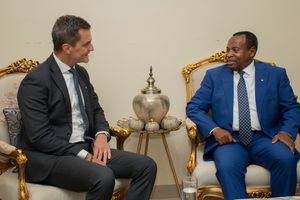Shouldn’t Mama Samia stress gender equality?

A little more than a month has elapsed since Ms Samia Suluhu Hassan became the first-ever female President of Tanzania.
This is counting from March 19, 2021 when President Hassan – popular as ‘Mama Samia’ – was sworn into the highest Office in the Land, following the death on March 17, 2021 of her precursor and mentor, the late President John Magufuli, 61.
In that regard, President Hassan (also 61 years ‘young’) had by April 7 made a gazillion eath-shaking decisions in government, almost all of which have arguably been revolutionary.
These include – but are by no means limited to – pledges to continue (and even revamp) socioeconomic development projects which were started by the late President Magufuli’s government (November 5, 2015-March 17, 2021), including the standard gauge railway, the Julius Nyerere Hydropower Station, and bolstering the ailing national air carrier, Air Tanzania Company Ltd.
Others of Mama Samia’s presidential decisions and directives are the lifting of restrictions/bans on freedom of the Press (already controversial, thanx to some Information ministry officials); a review of the education system (including assorted curricula); improving working relations between businesses and the taxman, and the swearing into office scores of public officials.
Arguably, this heralds what is the start of a new social, economic, political – and perhaps cultural? – era in Tanzania by Mama Samia’s Administration. However, I’m somewhat consternated that, while the world is struggling to achieve the United Nation’s Sustainable Development Goal No. 5 on “gender equality and empowering all women and girls” by 2030, President Hassan’s appointments and nominations are still very much male-dominated.
For example, only nine out of the 49 principal and deputy principal secretaries, as well as government institutional heads, appointed on April 4 this year are women.
Again, only five women ministers had been appointed by that date as against 19 male ministers...
As the executive director of the Hope for the Destitute People Foundation in Tanzania (HDPF-Tanzania), William Johnson, says: “Gender Equality and Development are twins; focusing on one and leaving the other behind (or out) will continue to create a gender gap... Societies that value women and men as equals are safer and healthier.”
For the uninitiated, ‘gender equality’ – widely considered as a human right – generally describes the situation in which people of the different genders in Society (that is: women, men, trans-gender/homosexuals and otherwise gender-diverse persons) have equal rights before the law... But they also have equal responsibilities and opportunities.
To bolster gender equality progress and implementation of the Sustainable Development Goals (SDGs), the government of Tanzania has made some efforts to align SDG implementation strategies with its assorted national development plans. By engaging civil society organisations, for example, the government is localising SDGs implementation.
Tanzania has ratified both the 2030 SDGs Agenda and the longer-term 2063 Agenda of the African Union (AU), as well as regional development plans such as the South African Development Community (Sadc) and the Regional Indicative Strategic Development Plan 2005-2020. Yet, current national plans don’t fully capture gender equality issues and women’s empowerment. [/data.em2030.org/countries/tanzania/>]
I urge President/Mama Samia Suluhu Hassan’s close aides and advisers to look into this arguably serious shortcoming in the new government. Failure by the government of our first woman President to undertake functional gender equality measures is anathematic, to say the least. Cheers/Tears!





